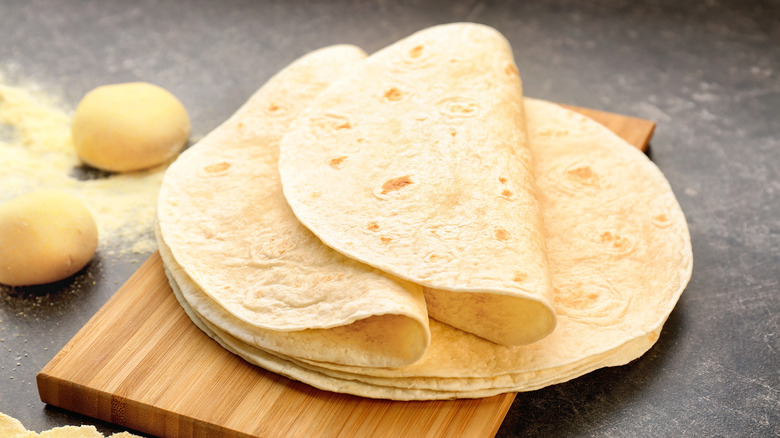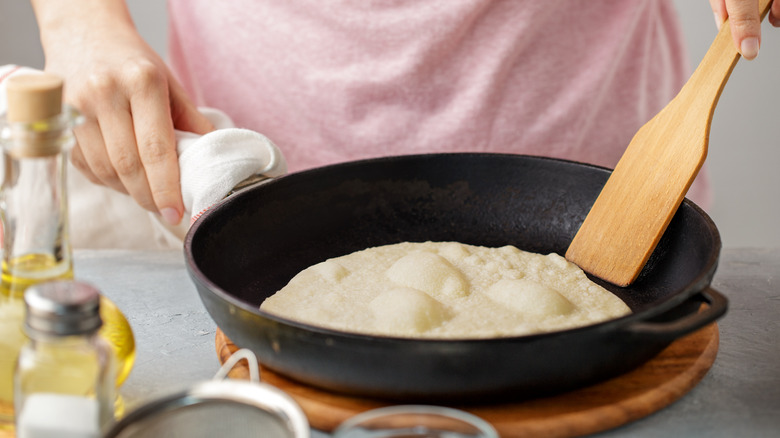The Best Way To Ensure Fluffy Homemade Flour Tortillas
Tortillas are the magical base for many of the most popular Mexican dishes. According to Mayan Family Mexican Restaurant, the original corn tortillas supposedly date back more than 12,000 years. Legend has it they were crafted from masa corn flour by a peasant for a hungry king, and became a common food item within the Mayan and Aztec diets. When Spaniards arrived thousands of years later, they recorded countless variations on these flatbreads and brought them back to Spain.
Some might think of the corn tortilla as being more authentic because of their long history, but their wheat flour-based cousins have just as much pedigree in Mexican culture. The Splendid Table says that while its exact origins are debated, flour tortillas seem to have first popped up around 400 to 500 years ago in Northern Mexico and what would now be the American Southwest.
While making tortillas at home might seem intimidating, it's also the secret to the best family taco nights. Flour tortillas don't even require any exotic ingredients or a tortilla press, per Epicurious. They're essentially a dough of water, flour, salt, and fat rolled into disks and heated quickly. There's just a few important things to keep in mind to ensure that you nail that perfectly light tortilla texture.
Temperature is key
One of the keys to making the perfect flour tortillas is to get the texture just right. According to Miss Vickie, a good flour tortilla should be pillowy soft and light. A good sign that you've nailed the texture is when the tortillas puff up as they are cooked.
Chef and cookbook author Danny Mena told Epicurious that there are a few ways to fix a tortilla that doesn't puff up correctly. It might be as simple as adjusting your cooking temperature. Mena says that you don't want the cooking surface to be either too cold. A proper cooking temperature will allow the bottom of the tortilla to cook while the top separates and the interior fills with steam like a balloon. Mena says that a quick tap with a spatula can help the layers of dough separate as well.
The Tortilla Channel also recommends using a flour with a protein content between 10% to 12%. This will ensure that there is enough gluten to give your dough structure and puff up properly when cooked.
It's also important to use a solid fat like lard or shortening that has a low water content. A fat that is liquid at room temperature usually means it has too much water, and that moisture will throw off your ratio. This might even mess with your dough's final texture.

